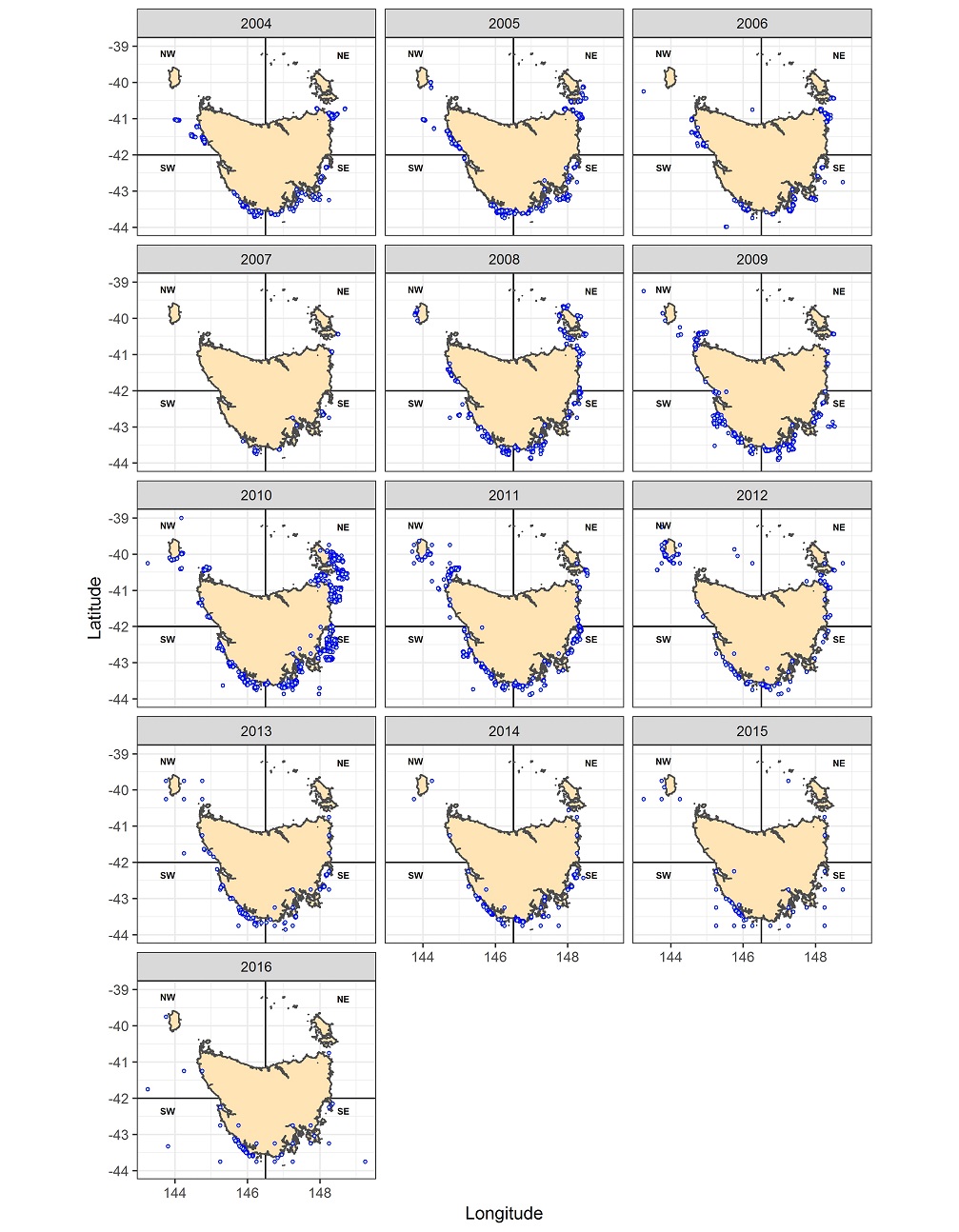Dr Rafael Leon, Gary Carlos, Professor Caleb Gardner
The stock assessments of the rock lobster and giant crab fisheries rely on a range of different sources of data.
The commercial log book data is important for this but we also collect more detailed information on lobster catch through other sampling methods.
This is our “Catch-Sampling” project and it has been running continuously since around 1990.
(Image, below: Distribution of lobster pots included in the bycatch-monitoring component of the catch sampling project)
 There are several components to the project:
There are several components to the project:
 Each of these have slightly different aims but typically involve collecting size-structure to help model changes in the population, changes in recruitment from abundance of undersize lobsters, growth and reproduction patterns, and ecosystem information such as bycatch.
Each of these have slightly different aims but typically involve collecting size-structure to help model changes in the population, changes in recruitment from abundance of undersize lobsters, growth and reproduction patterns, and ecosystem information such as bycatch.
This research is substantially funded by revenue generated by leasing 0.7% of the commercial lobster quota each year.
Click here for our publications and reports.
(Image, left: Measuring the size of a tagged lobster as part of long-term data set on growth)
Interested in this project?